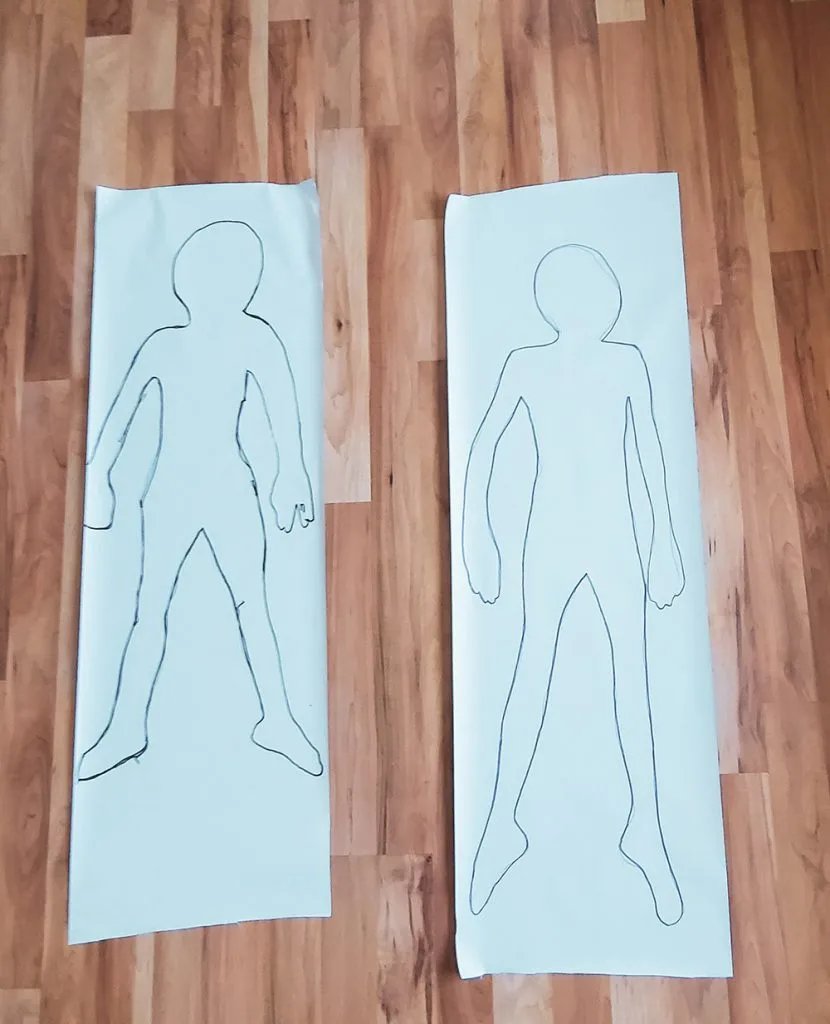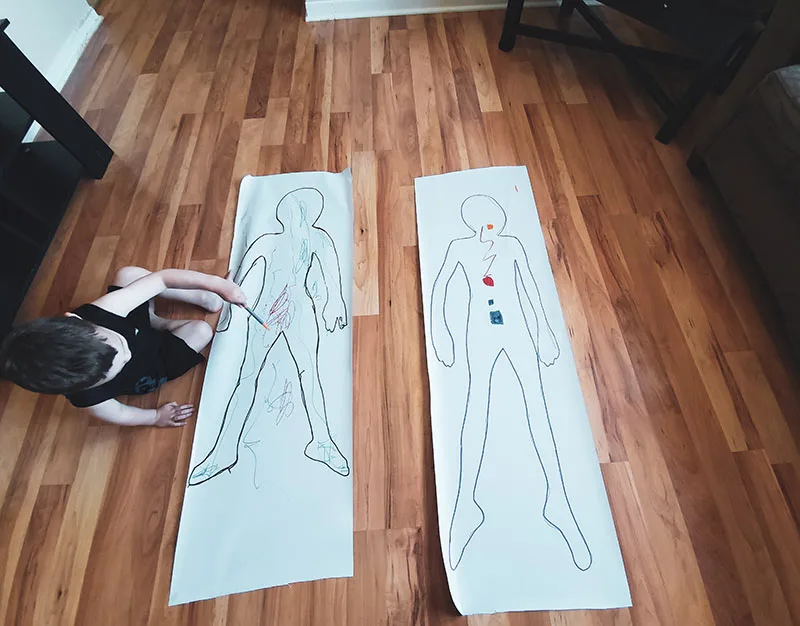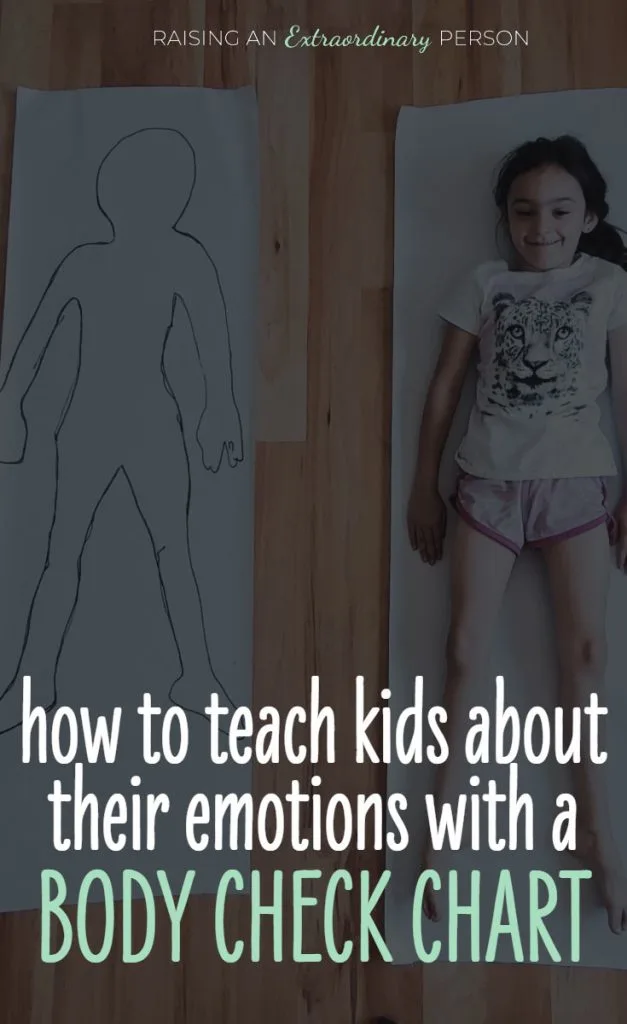Not a lot of people have heard of interoception. If this term is new to you, let me explain. Interoception is one of our senses — it’s how we sense the internal state of our bodies. You can read in detail how interoception works here. If you’re looking for ways to improve interoceptive awareness, this post explains how to build interoception with a body check chart.
Body Check Chart – Activities to Build Interoception
The interoceptive system controls our autonomic body movements, such as blinking, flinching, and breathing. It’s also how we feel and experience sensations inside our bodies, from hunger and thirst to our emotions. That experience is called interoceptive awareness.
Basically, that means the awareness of our bodies internal state.
Interoceptive awareness plays a huge role in self-regulation. Self-regulation is essentially the act of achieving and maintaining homeostasis.
If interoceptive awareness is off-balance, such as experiencing interoception too little, or too much, it will be extremely difficult to self-regulate.
Interoception and Identifying Emotions

One problem a lot of kids have is identifying emotions.
They have emotions, and they feel those emotions in their body. But the problem is that they can’t connect the two together to understand what’s happening. So basically what you see is just an intense reaction
It takes time for children to learn to pay attention to their body’s signals, recognize patterns in those signals, and then identify each with a particular emotion. Then it takes even more time for them to learn appropriate behaviors and strategies for those emotions.
One way to help your child to start making these connections is with a body check chart.
Making a Body Check Chart
Making a body check chart is easy.
- Roll out a large piece of paper on the floor.
- Tape down the corners, so it doesn’t roll up or move.
- Have your child lay on their back on the paper and trace their body. You’ll probably have to touch up the outline to smooth it out a little.
That’s it! This is your child’s own body check chart, drawn based on their own body. There are many different interoception activities you can do with this chart.

Interoception Activities with the Body Check Chart
There are a variety of activities you can do with the body check chart to help build interoceptive awareness, depending on your child’s abilities.
Body Awareness Activities
These are good starting activities before getting into the emotional aspects of interoception.

Self-awareness and Emotional Regulation Activities
These activities help children start building a deeper understanding between the sensations in their bodies and the emotions they’re feeling.

These are my kids’ charts, they are 3-years old and 5-years-old. We used red for anger, blue for sadness, orange for happiness,
How Does the Body Check Chart Help Interoception?
A lot of children with atypical sensory processing don’t feel the sensations in their body until they become intense.
For example, they don’t notice they are hungry until they’re starving and want to eat right now! Likewise, they may overeat because they can’t tell when they’re full until they are really full.
Or, they don’t notice they need to use the washroom until it’s urgent so they run to the washroom and frequently have accidents. Another example is the child who never feels cold, or never feels pain.
Using a body check chart improves interoceptive awareness because it gets children thinking about their body’s. Over time children become more aware of the messages their body sends them and what those messages mean so they can deal with them sooner, and improve self-regulation.
Want more interoception ideas? Check out these 9 interoception activities for kids.


Interoception and autism : body awareness challenges for those with ASD
Monday 4th of November 2019
[…] A child can learn to pay attention to their body’s signals, recognize patterns in those signals, and then identify each with a particular emotion. These connections can be made through using a body check chart. […]
The Zones of Regulation - An Overview of The Zones for Parents
Saturday 2nd of November 2019
[…] Body Check Activity – Use this activity to help your child identify how they experience different emotions. Talk about which zone these different feelings are in. […]
9 Interoception Activities for Kids - Autism & ADHD Resources
Saturday 31st of August 2019
[…] Option one, you can use a large roll of paper and get your child to lay down and trace their entire body. Then you can start coloring, drawing, and labeling different sensations and what emotions they are linked to. We did this activity, you can see all the pictures here. […]
Emotion Chart: A Simple Way To Check In On Your Child's Feelings
Monday 5th of August 2019
[…] recently did this body chart activity to encourage the kids to think about how their emotions […]
Feelings Chart for Kids: "I Am Feeling..." · - Free Printable
Monday 5th of August 2019
[…] Body Check Activity […]